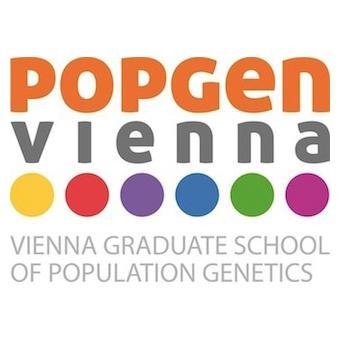
Riccardo Pianezza
@r_pianezza
Followers
103
Following
288
Media
15
Statuses
55
PhD student at PopGen Vienna, Institute of Population Genetics. Transposons, ancient DNA, bioinformatics. And birds
Vienna, Austria
Joined May 2022
Struggling to find a reliable and up-to-date repeat library for your organism of interest? With GenomeDelta, you might not need one anymore to discover cool TE families! Check out our latest publication in @GenomeBiology: https://t.co/axCPoyLH9J
genomebiology.biomedcentral.com
We present GenomeDelta, a novel tool for identifying sample-specific sequences, such as recent transposable element (TE) invasions, without requiring a repeat library. GenomeDelta compares high-qua...
1
3
9
I'm thrilled to announce that our lab has relocated to @MPI_EvolBio MPI for Evolutionary Biology 🥳. I had a great experience starting my group at the institute of Population Genetics @PopGenVienna , and enjoyed collaborating with the population genetics community in Vienna.
3
8
67
Our work is finally out! Two TEs that triggered a cascade of invasion after introduction to cosmopolitan species of Drosophila. @Almoro_Scarpa @r_pianezza @KoflerRobert are such a pleasure to work with.
nature.com
Nature Communications - Horizontal transfer of genetic material in eukaryotes has rarely been documented over short evolutionary timescales. Here, the authors show that two transposable elements,...
3
13
30
Super proud - our new work about two troublesome TEs spreading into several Droso species in just a few decades; it was so much fun to work with the amazing @r_pianezza @Almoro_Scarpa @signor_molevol
0
9
19
🧬Research Alert!🧬 @PNASNews features our latest research 🐴 ✨ We explained the legacy of Oriental horses, embedded in a 1,500-year-old Crown lineage 👑 spread across continents and centuries! 🌍 🧵 1/5 #MSY #HorseGenetics #HorseBreeds #Ancestry
https://t.co/u8JneWmLVl
pnas.org
Since their domestication, horses have accompanied mankind, and humans have constantly shaped horses according to their needs through stallion-cent...
1
10
23
Ready to present my poster at the Genetics Society meeting on TE regulation in Leicester! Pass by if you want to hear about cascades of TE invasions in flies 🪰
0
3
17
Incredibile conference! A lot of fun and a lot of great talks and posters on TEs at #cshlTE24 🧬
@Almoro_Scarpa & colleagues in @KoflerRobert Lab identified multiple transposons horizontally introduced in Drosophila over the past century, underscoring the promiscuity of TEs and their ability to spread worldwide in a matter of years. Amazing ‼️ #cshlTE24
0
1
14
@Almoro_Scarpa & colleagues in @KoflerRobert Lab identified multiple transposons horizontally introduced in Drosophila over the past century, underscoring the promiscuity of TEs and their ability to spread worldwide in a matter of years. Amazing ‼️ #cshlTE24
0
3
8
What a great pleasure to have the chance to talk at @OfficialSMBE about transposon invasions in drosophilids! Thanks to the TE symposium organisers and to the great audience for the questions and feedback, I really appreciated #SMBE2024
1
3
25
Thanks to GenomeDelta, we were able to build this complete timeline of TE invasions in D. melanogaster, described here https://t.co/esfb1y7RK9 (4)
0
0
2
We validated the tool with artificial and real data. We used D. melanogaster, where GD identified all of the recent known TE invasions, and the Koalas, where GD spotted KorV, a recently invading endogenous retrovirus (3)
0
0
3
GenomeDelta workflow: take an assembly of a recently collected sample and map on it short reads from an old sample. GD find sequences in the assembly that are absent in the short read data (coverage gaps), providing consensus sequences of the repetitive elements detected (2)
1
0
4
Transposable elements invasions are tricky to identify, if you don't know the sequence of the TE. With our new tool -GenomeDelta- we provide a solution, which already helped us to find 3 new TE invasions in D. melanogaster (1) https://t.co/nirlqad1uD
biorxiv.org
To evade repression by the host defense, transposable elements (TEs) are occasionally horizontally transferred (HT) to naive species. TE invasions triggered by HT may be much more abundant than...
3
19
55
Looking forward to @DarrenObbard visiting our #PhD students! If you subscribed for #zoom announcements https://t.co/bSjMOX8DLm you'll receive access details for this week's #PopGen Tuesday #webinar: "Mutation, recombination, and transposition in Drosophilidae."
docs.google.com
Submit your email address to receive the weekly streaming link (usually on Mondays) to our Tuesday webinar series (March-June and Oct-Jan). Talk overview here: https://www.popgen-vienna.at/news/sem...
1
2
9
Super excited my first chapter is out now in @MolBioEvol! Thanks to reviewers and editor, we validated our genome-wide inferences with #DECUB in light of gene-specific heterogeneities on mutation biases and codon usage. 1/4 https://t.co/mRGPsXWN4v
academic.oup.com
Abstract. Different frequencies amongst codons that encode the same amino acid (i.e. synonymous codons) have been observed in multiple species. Studies foc
1
7
31
Looking for a #PhDposition in #EvolutionaryBiology? Then consider applying to this position: https://t.co/aCJdlEoPqr The project aims to develop phylogenetic methods to help us assess the prevalence and impact of gene flow during species divergence from phylogenomic data.
1
14
23
@Almoro_Scarpa @signor_molevol @KoflerRobert 8 TEs are coming from D. simulans (a closely related species), while 3 (P-element, Spoink and MLE) are coming from the D. willistoni group of species. This species are endemic to South America, where D. mel arrived only a few centuries ago following humans. Is it again our fault?
0
0
3
@Almoro_Scarpa @signor_molevol @KoflerRobert Transib1 took ONLY 3 YEARS to spread from nothing to all the sampled populations. Is it related to humans bringing flies around the world at an unprecedented rate?
1
0
8
@Almoro_Scarpa @signor_molevol @KoflerRobert Here we have the complete timeline with the 11 invaders: Blood, Opus, 412, Tirant, I-element, Hobo, P-element, Spoink, MLE, Souslik and Transib1! The last 3 invasions where characterized in this work
0
0
4
@Almoro_Scarpa @signor_molevol @KoflerRobert We used a new approach free of repeat libraries to identify new candidates of TE invasions, and we show that 11 TEs were completely absent in old strains but are present now in the D. melanogaster worldwide population
0
0
4















